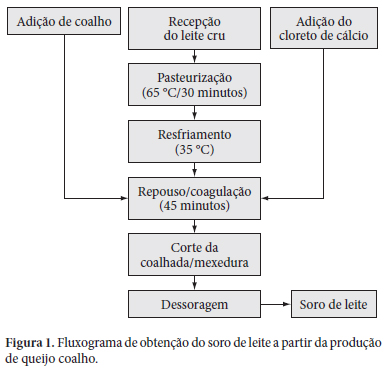The purpose of this work was to evaluate the efficiency of a ceramic membrane with (porosity of 0.8 µm) to filter the whey of buffalo's milk aiming to reduce the microbial charge and characterize the nutritional value of this product. The results were compared with those of the pasteurization process (65 ºC, 30 minutes). Seven assays were carried out by submitting the samples to filtration or pasteurization processes. The samples were then analyzed before (SBF) and after (SAF) filtration and after pasteurization (SAP) regarding the mesophyllic aerobic bacteria count. The milk whey samples before filtration (SBF) was also characterized regarding physico-chemical parameters (pH, density, acidity, humidity, total dried extract, concentration of total fats, lactose, and protein). The results indicate a reduction of the microbial charge from 4.04 x log CFU.mL-1 to 1.50 x log CFU.mL-1 in the SAP samples and to 0.70 x log CFU.mL-1 in the SAF samples. Other findings were pH = 6.29, acidity = 10.07, humidity = 89.94, total dried extract = 10.06, density = 1.029, protein = 1.19%, lactose = 5.85%, and fat = 1.37%. The microfiltration process using a ceramic membrane proved more efficient than the pasteurization process regarding microbial charge reduction.
ceramic membrane; buffalo's milk; milk whey; microfiltration



